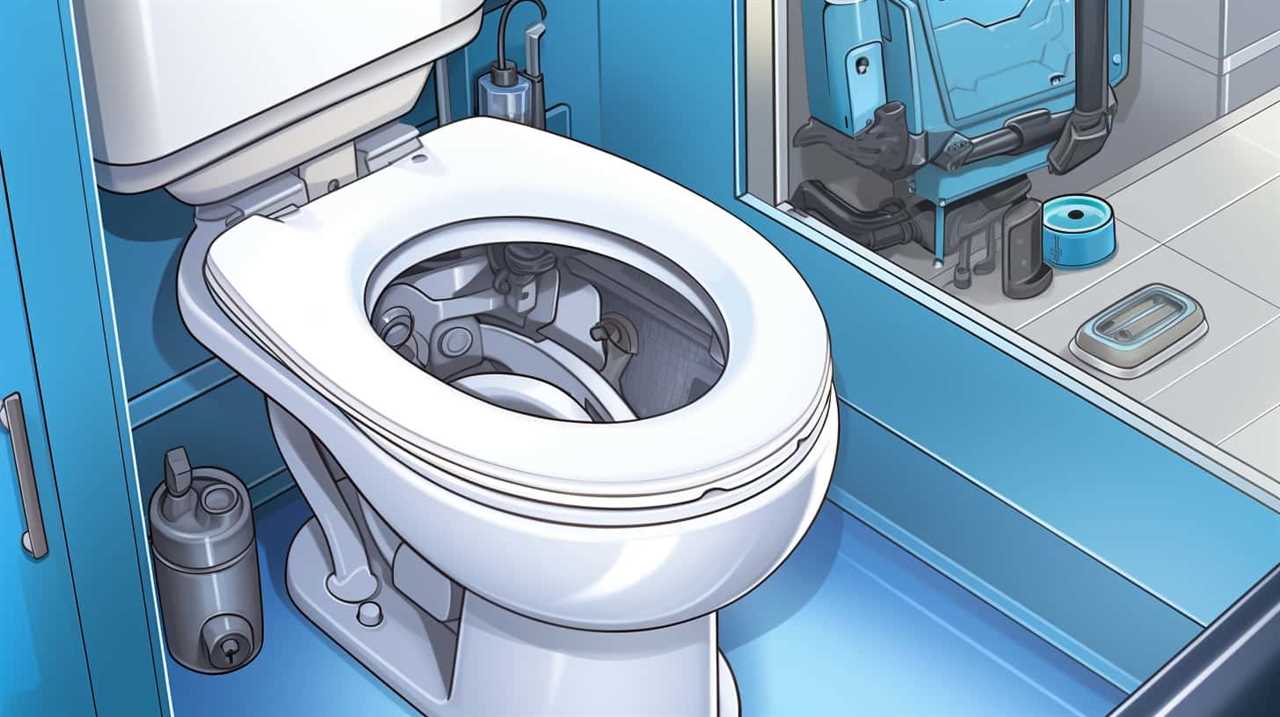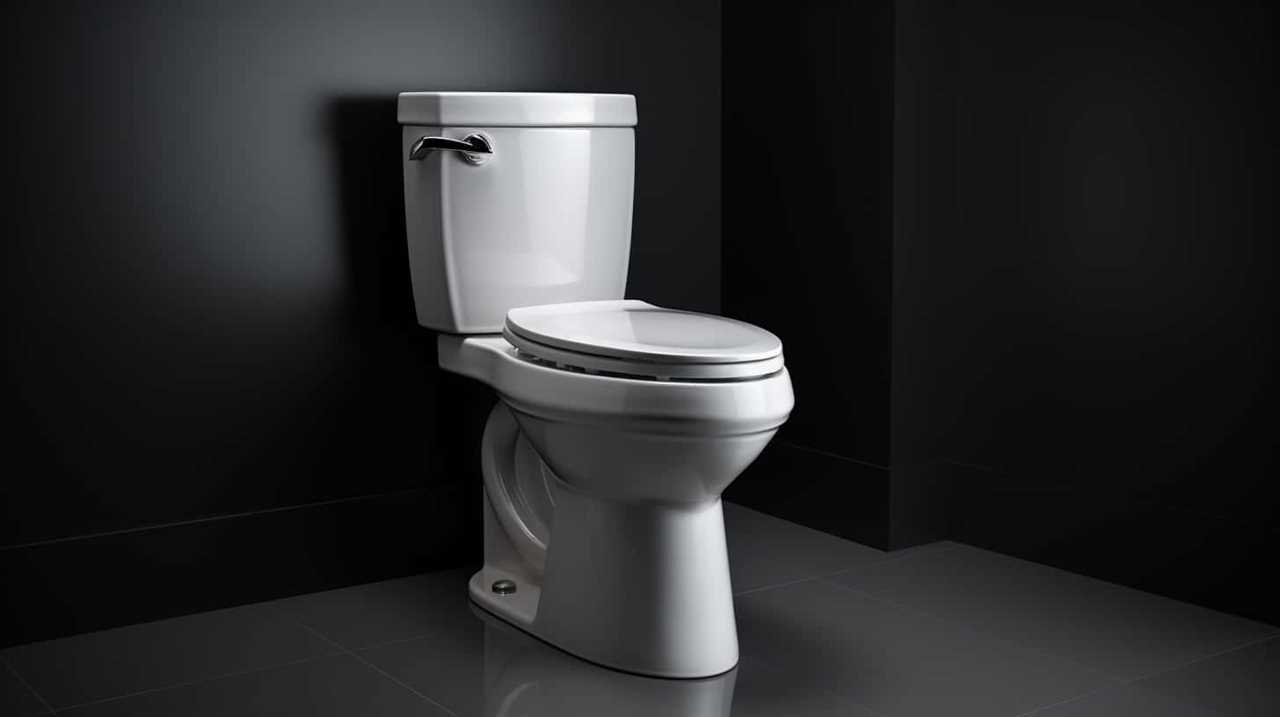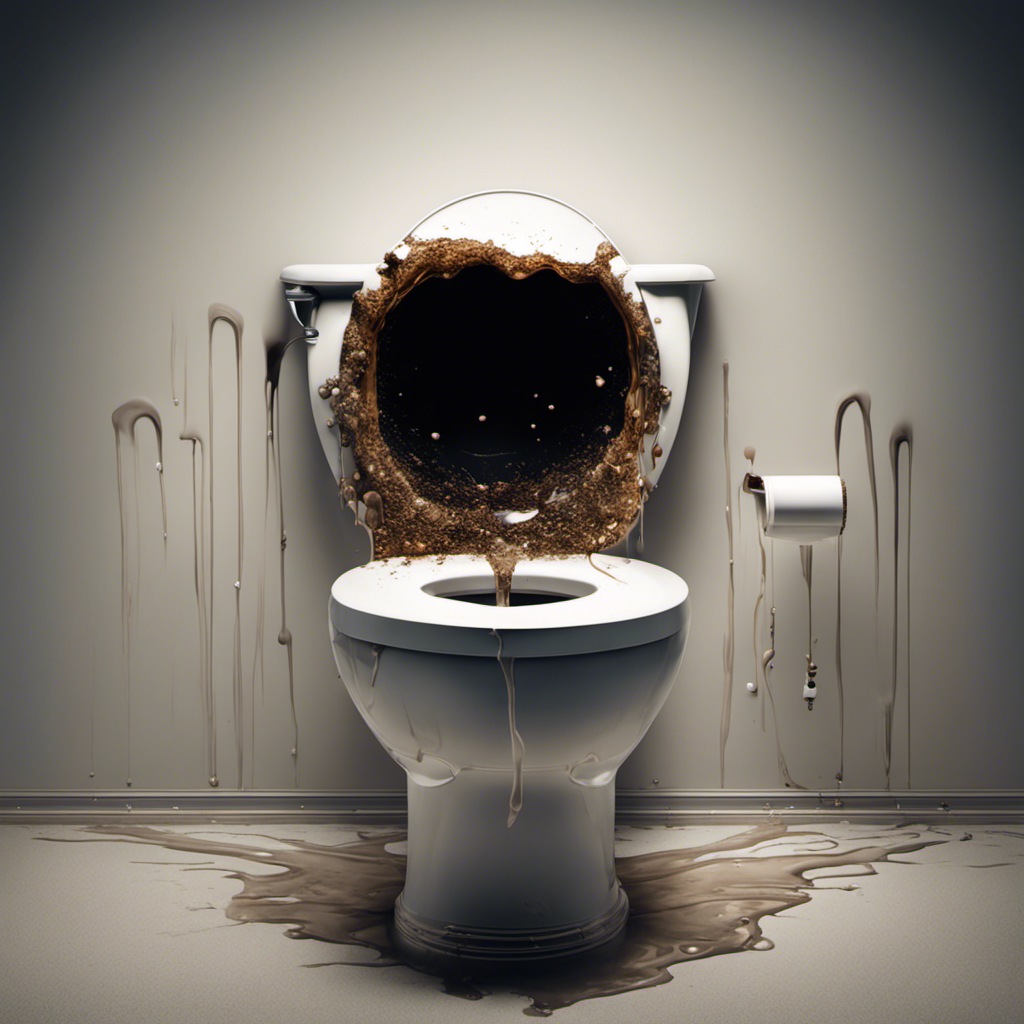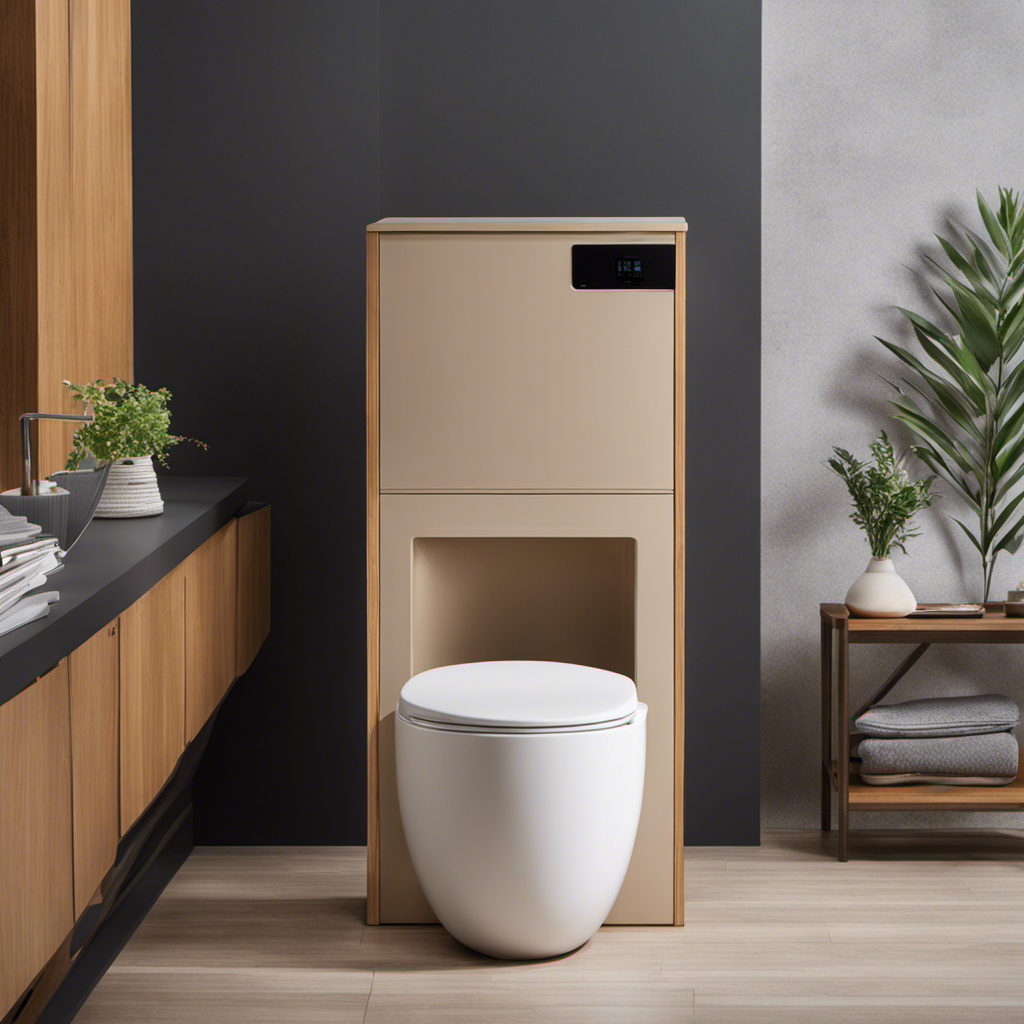Are you tired of dealing with clogged drain pipes? Don’t worry, we’ve got you covered. In this article, we’ll show you how to flush a drain pipe step-by-step, so you can regain control over your plumbing system.
From gathering the necessary tools to preparing a homemade drain cleaner solution, we’ll guide you through the process of removing any visible debris or blockages and flushing the drain pipe with hot water.
Get ready to become a master of drain pipe maintenance!
Key Takeaways
- Flushing a drain pipe prevents clogs, removes debris, improves water flow, and reduces foul odors.
- The tools and materials needed for flushing a drain pipe include a plunger, drain snake, baking soda and vinegar, hot water, and drain cleaning solution.
- The steps to flush a drain pipe involve removing visible debris, using a plunger and drain snake, pouring a mixture of baking soda and vinegar, and flushing with hot water.
- To maintain a clean drain pipe, avoid pouring grease or oil down the drain, use a drain strainer, clean the drain stopper or cover regularly, flush with hot water weekly, and consider using a drain cleaning solution periodically.
Gather Necessary Tools and Materials
We gather the tools and materials needed to flush a drain pipe. Regular drain maintenance is of utmost importance to ensure the proper functioning of your plumbing system. Signs of a clogged drain include slow draining, gurgling sounds, and unpleasant odors.

To begin the process, gather a plunger, plumber’s snake, bucket, rubber gloves, and a drain cleaner or vinegar and baking soda mixture. These tools will help you effectively clear the blockage in your drain pipe.
The plunger creates pressure to dislodge debris, while the plumber’s snake reaches deeper to remove stubborn clogs. The bucket is essential for catching any water or debris that may come out during the process. Rubber gloves protect your hands from dirty water and chemicals.
Lastly, the drain cleaner or vinegar and baking soda mixture will help dissolve the clog and eliminate any remaining buildup.
Remove Any Visible Debris or Blockage
To effectively clear a clogged drain pipe, how can we remove any visible debris or blockage? Before attempting to flush the drain pipe, it is crucial to remove any visible debris or blockage that may be causing the clog. Here are the steps to follow:

- Use gloves and a flashlight to inspect the drain pipe for any visible debris or blockage.
- If you can see the cause of the clog, carefully remove it using tongs or pliers.
- If the debris is too far down the pipe to reach, try using a plumbing snake to dislodge it.
- Another option is to use a plunger to create suction and dislodge the blockage.
- If none of these methods work, it may be necessary to call professional drain cleaning services for assistance.
By taking preventive measures such as regularly cleaning drain pipes and being mindful of what goes down them, you can minimize the risk of clogs and the need for professional assistance.
| Pros of DIY Drain Cleaning | Cons of DIY Drain Cleaning | Benefits of Professional Drain Cleaning Services |
|---|---|---|
| Cost-effective | Limited effectiveness | Expertise and specialized equipment |
| Convenient | Potential damage to pipes | Thorough and efficient cleaning |
| Immediate action | Time-consuming | Identification of underlying issues |
Prepare a Homemade Drain Cleaner Solution
To prepare a homemade drain cleaner solution, gather the necessary ingredients and follow these simple steps.
Chemical alternatives for drain cleaning can be effective, but they often come with their own set of pros and cons. Some chemical drain cleaners can be harsh and may damage pipes or harm the environment. Natural drain cleaning methods offer a safer alternative that’s also effective.
One simple homemade solution is a mixture of baking soda and vinegar. Start by pouring half a cup of baking soda down the drain, followed by half a cup of vinegar. Cover the drain and let the mixture sit for about 30 minutes. Then, flush the drain with hot water to remove any remaining debris.

This natural drain cleaner solution can help to break down clogs and remove odors without the use of harsh chemicals.
Flush the Drain Pipe With Hot Water
Flushing the drain pipe with hot water helps to clear out any remaining debris and ensure proper drainage. Regular drain maintenance is important to prevent clogs and maintain the functionality of your plumbing system.
While chemical drain cleaners may seem like a convenient solution, they have their pros and cons. Chemical drain cleaners can effectively dissolve clogs, but they often contain harsh chemicals that can damage pipes and harm the environment. Additionally, repeated use of chemical drain cleaners can lead to the buildup of resistant clogs.
On the other hand, flushing the drain pipe with hot water is a safer and more environmentally-friendly method. Hot water can help dissolve grease and other substances that may be clogging the drain, without causing any damage. If the clog persists, repeat the process using additional methods.

Repeat the Process if Necessary
If the clog persists, we can try additional methods to ensure proper drainage. Here are some alternative drain cleaning methods to consider:
- Use a drain snake:
Insert the snake into the drain and rotate it to break up the clog. Pull out any debris that you encounter. - Try a chemical drain cleaner:
Follow the instructions on the product carefully. Pour the recommended amount into the drain and allow it to sit for the specified time before flushing with hot water. - Call a professional plumber:
If all else fails, it may be time to seek professional help. A plumber will have the necessary tools and expertise to clear even the toughest clogs.
Frequently Asked Questions
How Often Should I Flush My Drain Pipe?
We should clean our drain pipes regularly to prevent clogs and maintain optimal functionality. Flushing the drain pipe helps remove debris and buildup, ensuring smooth water flow and preventing potential plumbing issues.
Can I Use a Commercial Drain Cleaner Instead of a Homemade Solution?
Yes, you can use commercial drain cleaners instead of homemade solutions. They are effective in unclogging drains and can save time. However, be cautious with their use as they may contain harsh chemicals that can damage your pipes.
What Are the Signs That Indicate a Drain Pipe Needs to Be Flushed?
Signs of a clogged drain include slow drainage, foul odors, and gurgling sounds. Regular drain maintenance is important to prevent clogs. Flushing a drain pipe can help remove debris and restore proper flow.

Is It Necessary to Remove the Drain Cover Before Flushing the Pipe?
Yes, it is necessary to remove the drain cover before flushing the pipe. This allows for easier access and ensures a thorough cleaning. However, there are alternative flushing methods that can be used if removing the drain cover is not possible.
Are There Any Precautions I Should Take While Flushing the Drain Pipe?
Before flushing the drain pipe, it is important to take precautions to ensure a successful and efficient process. Following best practices such as wearing gloves, using protective eyewear, and clearing any blockages beforehand will help achieve optimal results.
Conclusion
In conclusion, by gathering the necessary tools and materials, removing any visible debris or blockage, preparing a homemade drain cleaner solution, and flushing the drain pipe with hot water, you can effectively flush a drain pipe.
If necessary, repeat the process to ensure a clear and functioning drain.

By following these step-by-step instructions, you can maintain the cleanliness and functionality of your drain system.










